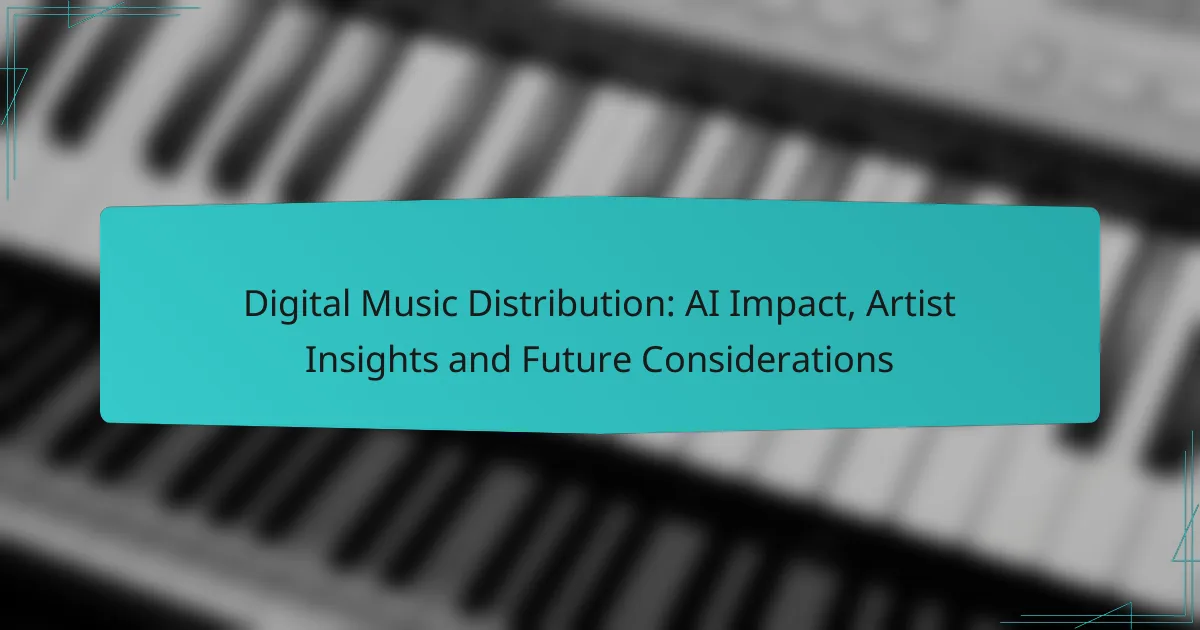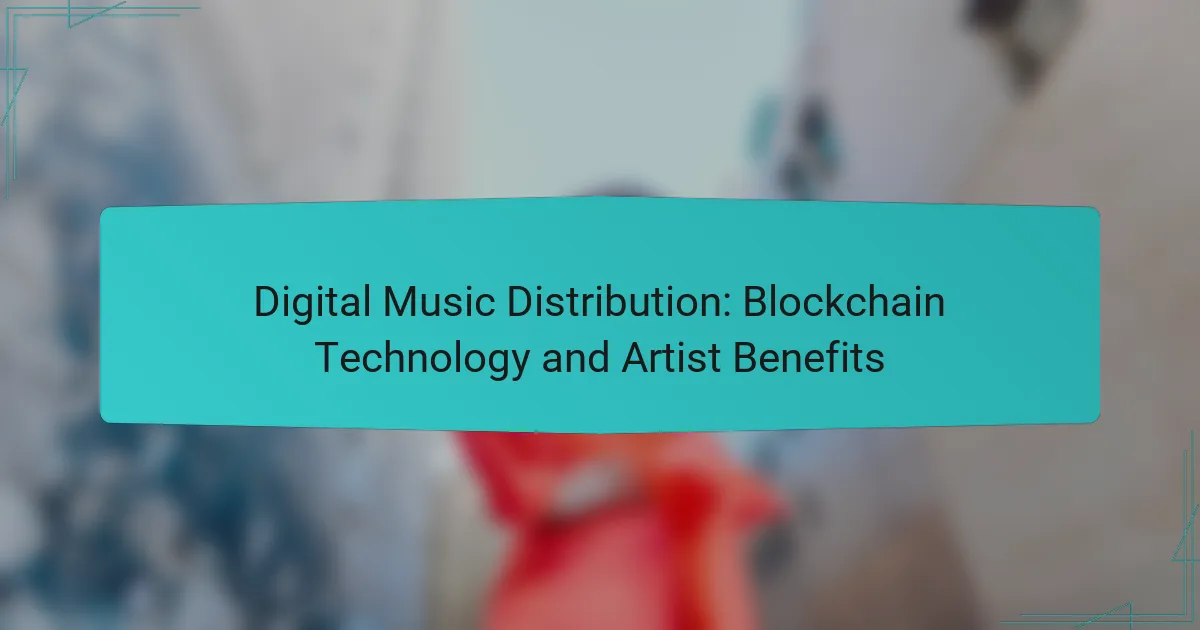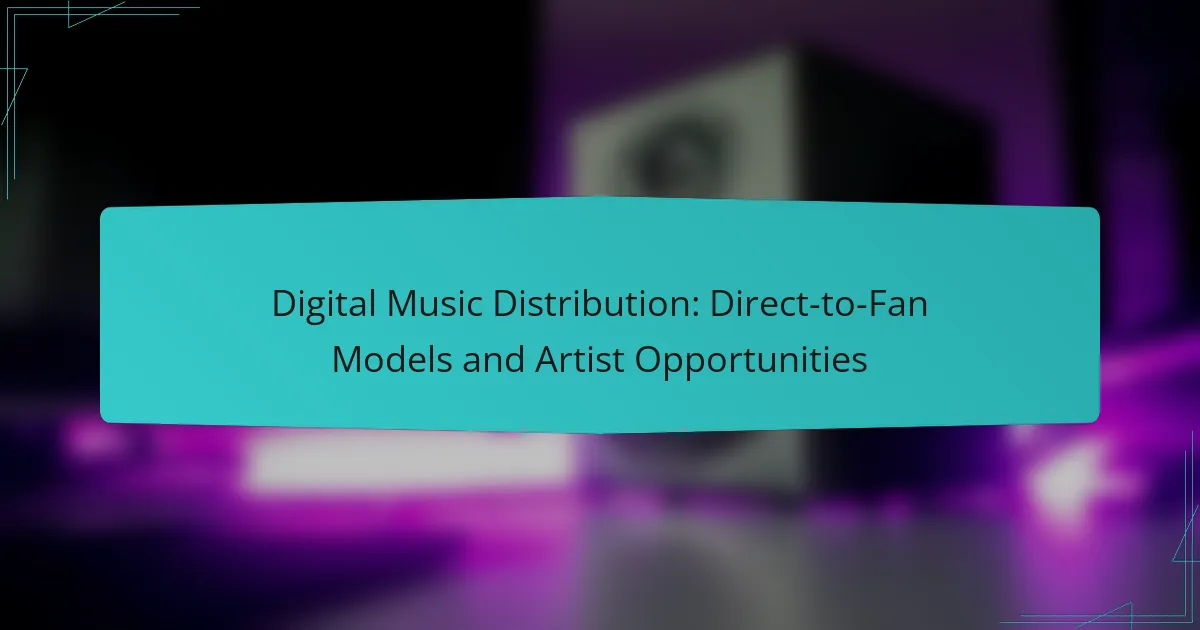Digital music distribution is undergoing a revolution driven by artificial intelligence, which automates processes and enhances data analytics for artists and labels alike. This transformation not only streamlines operations but also optimizes marketing strategies, allowing musicians to reach their audiences more effectively. As artists navigate various distribution platforms like CD Baby, TuneCore, and DistroKid, understanding the role of AI can help them make informed decisions and maximize their impact in the music industry.
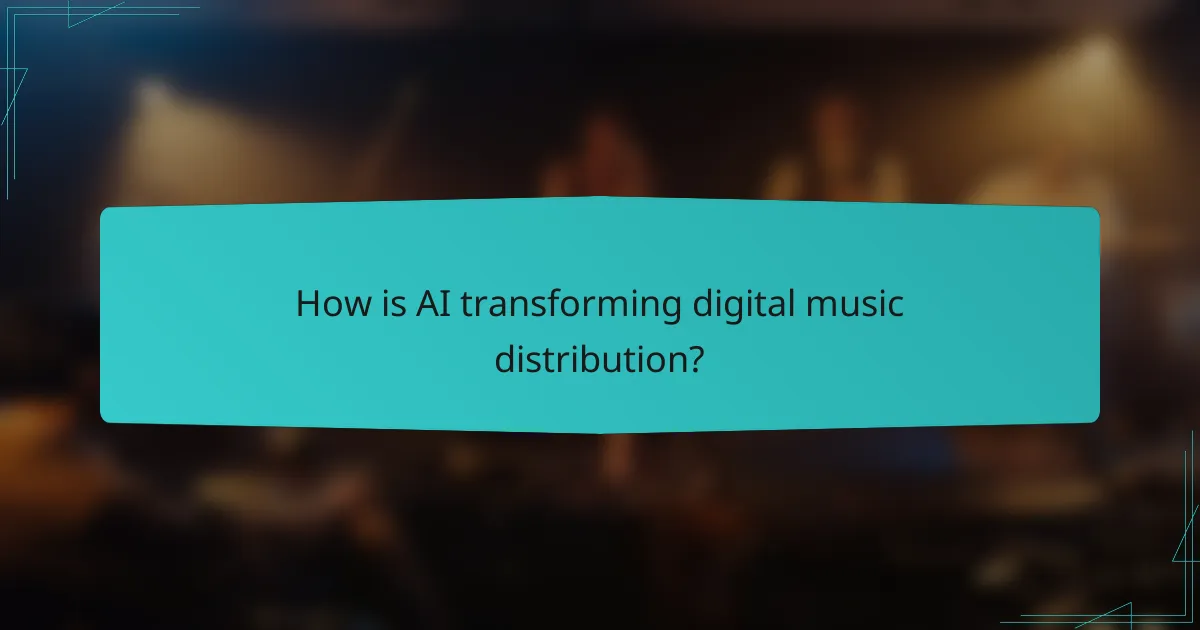
How is AI transforming digital music distribution?
AI is significantly transforming digital music distribution by automating processes, enhancing data analytics, and optimizing marketing strategies. These advancements streamline operations for artists and labels, allowing for more efficient and effective distribution of music worldwide.
Automated distribution processes
AI technologies are streamlining the distribution of music by automating tasks that were once manual. For instance, platforms can now automatically upload tracks to multiple streaming services, reducing the time artists spend on logistics. This automation can lead to faster release times, enabling artists to respond quickly to market trends.
Additionally, AI can help manage rights and royalties more efficiently. By using algorithms to track plays and calculate earnings across different platforms, artists can receive timely and accurate payments, which is crucial for financial planning.
Enhanced data analytics for artists
AI enhances data analytics by providing artists with deeper insights into listener behavior and preferences. Through machine learning, platforms can analyze vast amounts of streaming data to identify trends, such as which songs are performing best in specific demographics or regions. This information allows artists to tailor their music and marketing strategies accordingly.
Moreover, predictive analytics can forecast future trends, helping artists make informed decisions about their releases and promotional efforts. By understanding audience engagement metrics, artists can focus on building their fan base more effectively.
AI-driven marketing strategies
AI is revolutionizing marketing strategies in the music industry by enabling targeted advertising and personalized recommendations. By analyzing user data, AI can create customized marketing campaigns that resonate with specific audiences, increasing the likelihood of engagement and conversion.
For example, AI tools can optimize social media ads by determining the best times to post and the most effective content to share. This targeted approach not only maximizes reach but also minimizes advertising costs, making it a cost-effective solution for independent artists and labels.
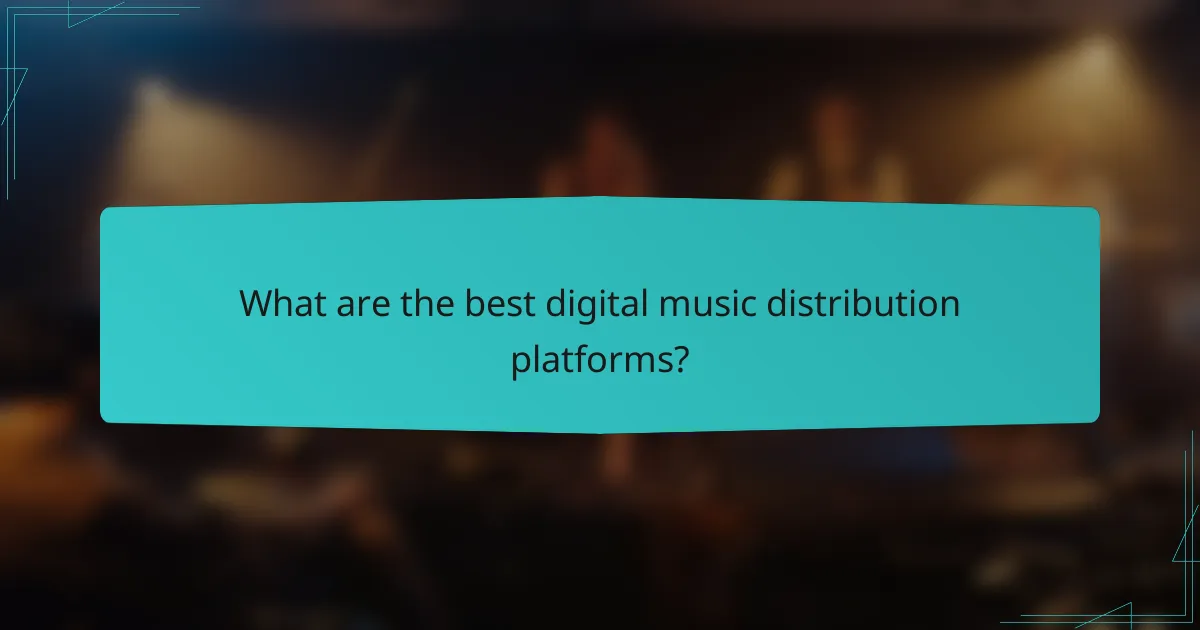
What are the best digital music distribution platforms?
The best digital music distribution platforms include CD Baby, TuneCore, and DistroKid, each offering unique features and pricing models. Choosing the right platform depends on your specific needs as an artist, such as budget, speed of distribution, and additional services.
CD Baby features
CD Baby is known for its comprehensive services, including distribution to over 150 digital platforms like Spotify, Apple Music, and Amazon Music. It also offers physical distribution options, allowing artists to sell CDs and vinyl directly to fans.
Additionally, CD Baby provides tools for marketing, sync licensing, and even music publishing, making it a versatile choice for independent musicians. Their user-friendly interface simplifies the process of uploading music and managing sales.
TuneCore pricing and services
TuneCore operates on a subscription-based model, charging artists an annual fee for music distribution. Prices typically range from around $10 to $50 per release, depending on the type of music and the number of platforms selected.
In addition to distribution, TuneCore offers services such as music publishing administration and revenue tracking, which can be beneficial for artists looking to maximize their earnings. However, artists should consider the annual fees when budgeting for their music career.
DistroKid speed and efficiency
DistroKid is renowned for its rapid distribution, often delivering music to platforms within a few hours. This speed is particularly advantageous for artists who want to release music quickly or respond to trends in the industry.
The platform operates on a flat annual fee, allowing artists to upload unlimited songs and albums without incurring additional costs per release. This model is cost-effective for prolific musicians but may not suit those who release music infrequently.
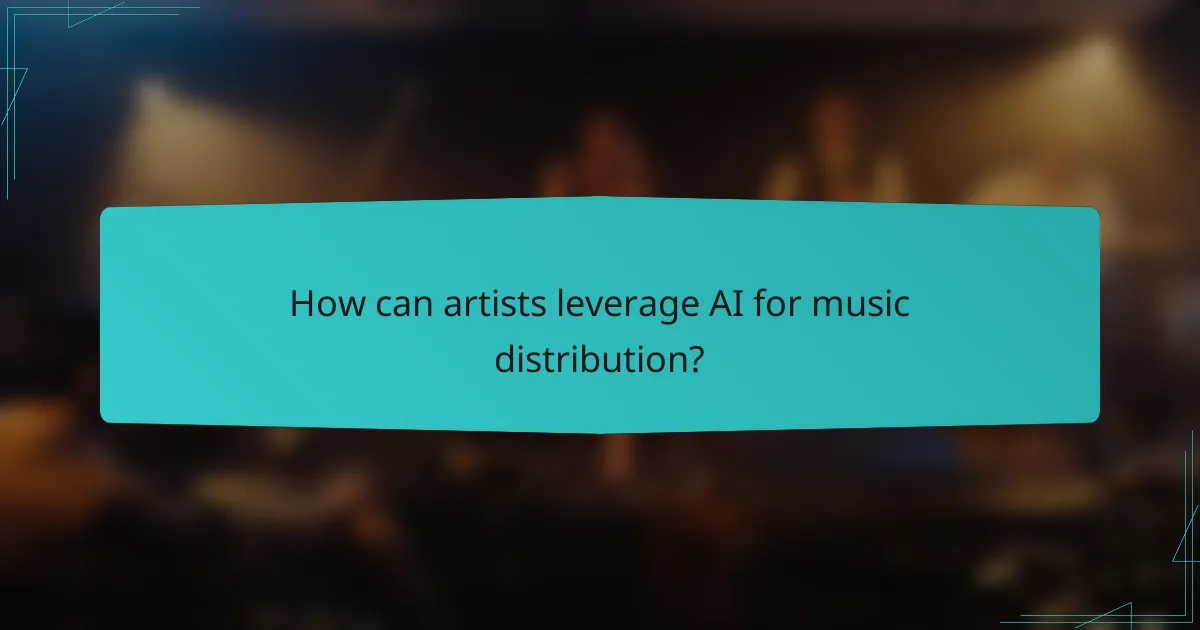
How can artists leverage AI for music distribution?
Artists can leverage AI for music distribution by utilizing advanced algorithms to optimize their reach and engagement with audiences. By employing AI tools, musicians can analyze listener data, enhance their marketing strategies, and streamline content creation.
AI tools for audience targeting
AI tools enable artists to identify and target specific audience segments based on listening habits and preferences. By analyzing data from streaming platforms and social media, musicians can tailor their promotional efforts to reach potential fans more effectively.
For instance, platforms like Spotify and Apple Music use AI to suggest artists to users based on their previous listening history. Artists can utilize this data to refine their marketing campaigns, focusing on demographics that are more likely to engage with their music.
Personalized music recommendations
AI-driven personalized music recommendation systems enhance user experience by suggesting tracks that align with individual tastes. These systems analyze user behavior, such as song skips and repeat listens, to curate playlists that resonate with listeners.
For artists, being featured in these personalized recommendations can significantly boost exposure. Collaborating with platforms that prioritize AI recommendations can help musicians reach new audiences and increase streaming numbers.
Content creation assistance
AI can assist artists in content creation by providing tools for songwriting, mixing, and mastering. Various AI applications can generate melodies, suggest chord progressions, or even help with lyric writing, allowing musicians to explore new creative avenues.
While AI can enhance creativity, artists should balance its use with their unique artistic vision. Relying too heavily on AI-generated content may dilute personal style, so it’s essential to use these tools as aids rather than replacements for human creativity.
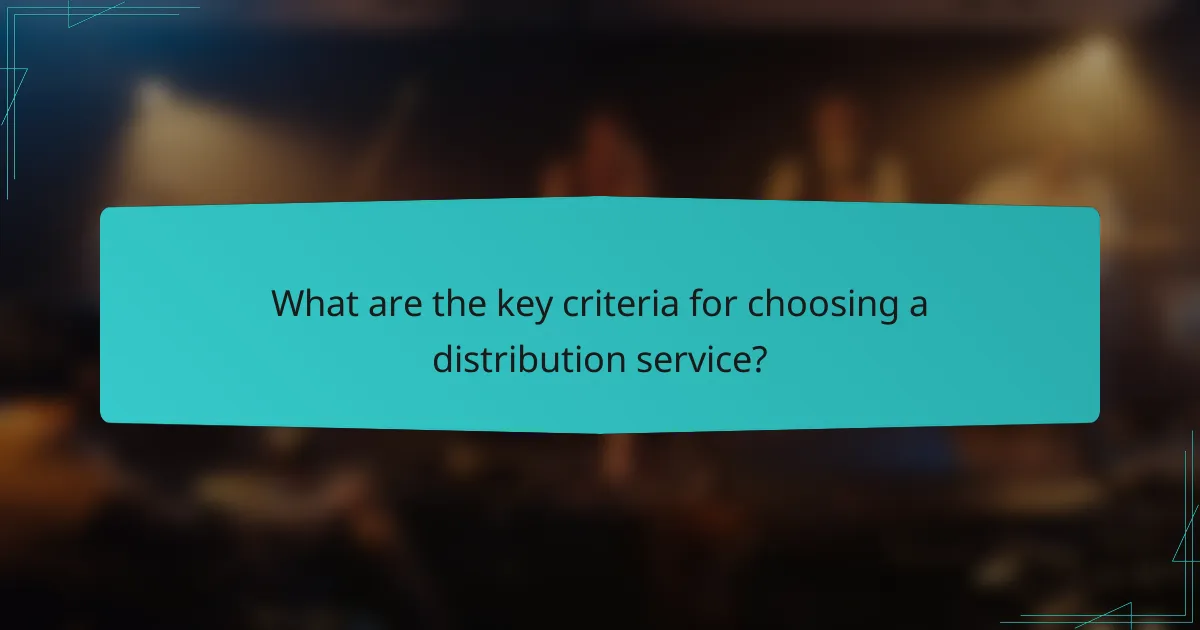
What are the key criteria for choosing a distribution service?
When selecting a digital music distribution service, consider factors such as revenue share models, global reach, and customer support options. These criteria can significantly impact your earnings, audience access, and overall experience with the service.
Revenue share models
Revenue share models determine how much of your earnings you keep from music sales and streaming. Most distribution services take a percentage of your revenue, which can range from around 10% to 30%. Understanding these models helps you evaluate which service offers the best financial return.
Some platforms offer flat fees instead of taking a percentage, which can be beneficial if you expect high sales. Compare the potential earnings based on your expected streaming and sales volume to find the most advantageous model for your situation.
Global reach and licensing
Global reach is crucial for maximizing your audience, as different services have varying agreements with international platforms. Ensure the distribution service you choose can distribute your music to major streaming services like Spotify, Apple Music, and others in multiple countries.
Licensing agreements can also affect your music’s availability in specific regions. Some services may require additional licensing for certain territories, so verify that your chosen distributor covers the markets you want to target.
Customer support options
Effective customer support can make a significant difference in your experience with a distribution service. Look for services that offer multiple support channels, such as email, chat, and phone support, to address any issues promptly.
Consider the availability of support during your working hours, as some services may only provide assistance during standard business hours. Reading user reviews can also provide insight into the responsiveness and helpfulness of a service’s customer support team.
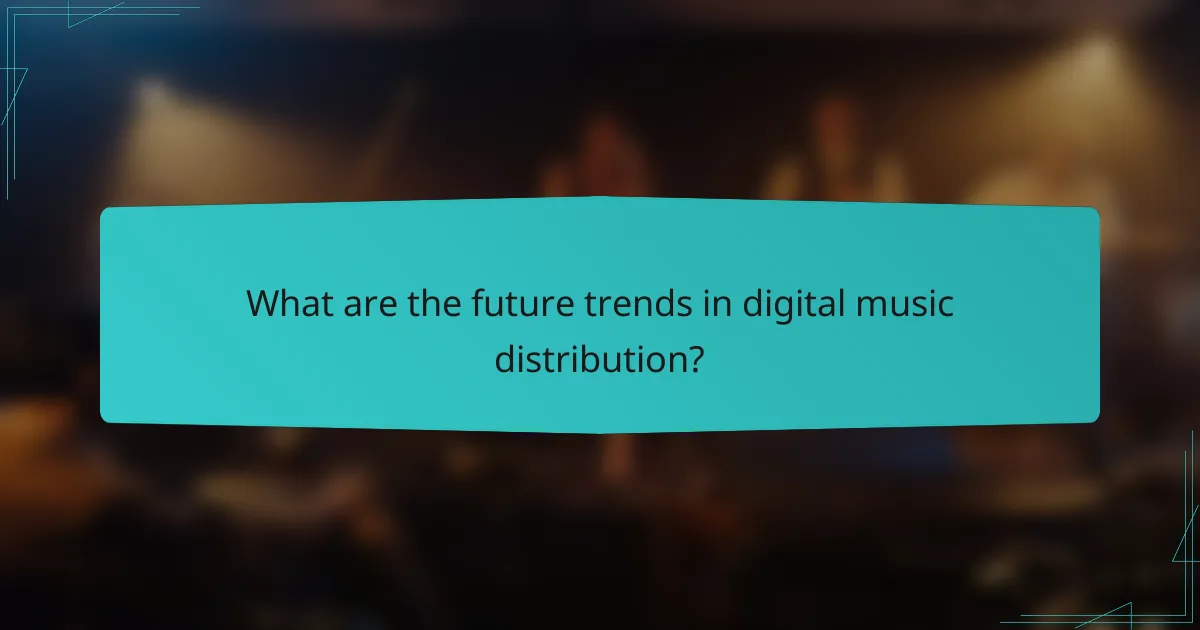
What are the future trends in digital music distribution?
The future of digital music distribution is shaped by several key trends, including the integration of blockchain technology, the rise of direct-to-fan sales, and the emergence of virtual concerts. These trends are transforming how artists connect with their audiences and monetize their work.
Blockchain technology integration
Blockchain technology is revolutionizing digital music distribution by providing transparent and secure ways to manage rights and royalties. This decentralized system allows artists to track their music usage and receive payments directly, reducing the need for intermediaries.
For artists, utilizing blockchain can mean faster payments and more control over their intellectual property. Platforms like Audius and Ujo Music are examples of how blockchain is being applied in the music industry, enabling artists to distribute their work while retaining ownership.
Growth of direct-to-fan sales
Direct-to-fan sales are becoming increasingly popular as artists seek to build stronger connections with their audiences. By selling music, merchandise, and concert tickets directly through their websites or platforms like Bandcamp, artists can retain a larger share of revenue.
This trend allows for personalized marketing and engagement strategies, such as exclusive content or limited-edition releases. Artists should consider leveraging social media and email marketing to promote these direct sales effectively.
Emergence of virtual concerts
Virtual concerts have gained traction, especially following the pandemic, as they offer a new way for artists to perform and reach global audiences. These online events can be more accessible and cost-effective, allowing fans to enjoy live music from the comfort of their homes.
Platforms like Twitch and YouTube Live are popular for hosting virtual concerts, and artists can monetize these events through ticket sales, merchandise, and donations. It’s essential for artists to invest in quality production and marketing to ensure a successful virtual concert experience.
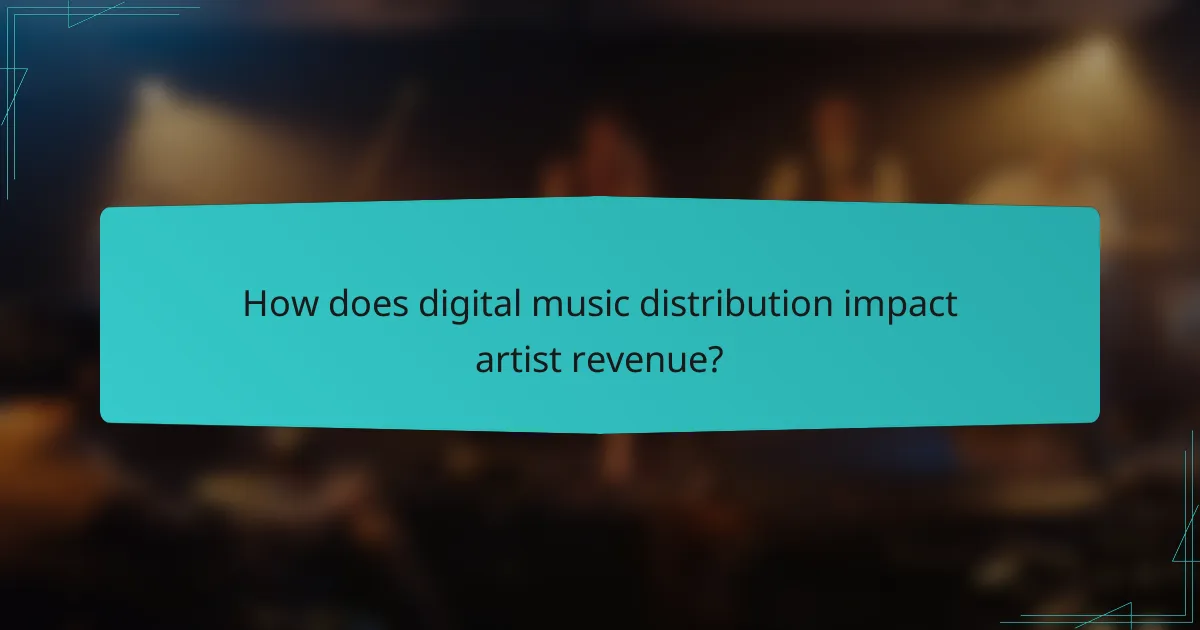
How does digital music distribution impact artist revenue?
Digital music distribution significantly affects artist revenue by determining how artists earn from their music across various platforms. The shift from physical sales to streaming has changed the revenue landscape, often resulting in lower per-play earnings but increased access to global audiences.
Streaming royalties breakdown
Streaming royalties are typically calculated based on a pro-rata system, where a portion of the total subscription or ad revenue is distributed among artists based on their share of total streams. This means that while an artist may receive only a fraction of a cent per stream, higher play counts can lead to greater overall earnings.
For example, major platforms like Spotify and Apple Music pay artists anywhere from $0.003 to $0.005 per stream, depending on various factors such as the listener’s location and subscription type. Artists should consider the importance of building a loyal fan base to increase their streaming numbers, as this can significantly enhance their revenue.
It’s crucial for artists to understand their contracts with distributors and labels, as these agreements can affect how much they ultimately receive from streaming royalties. Many artists find it beneficial to negotiate favorable terms or explore independent distribution options to retain a larger share of their earnings.
